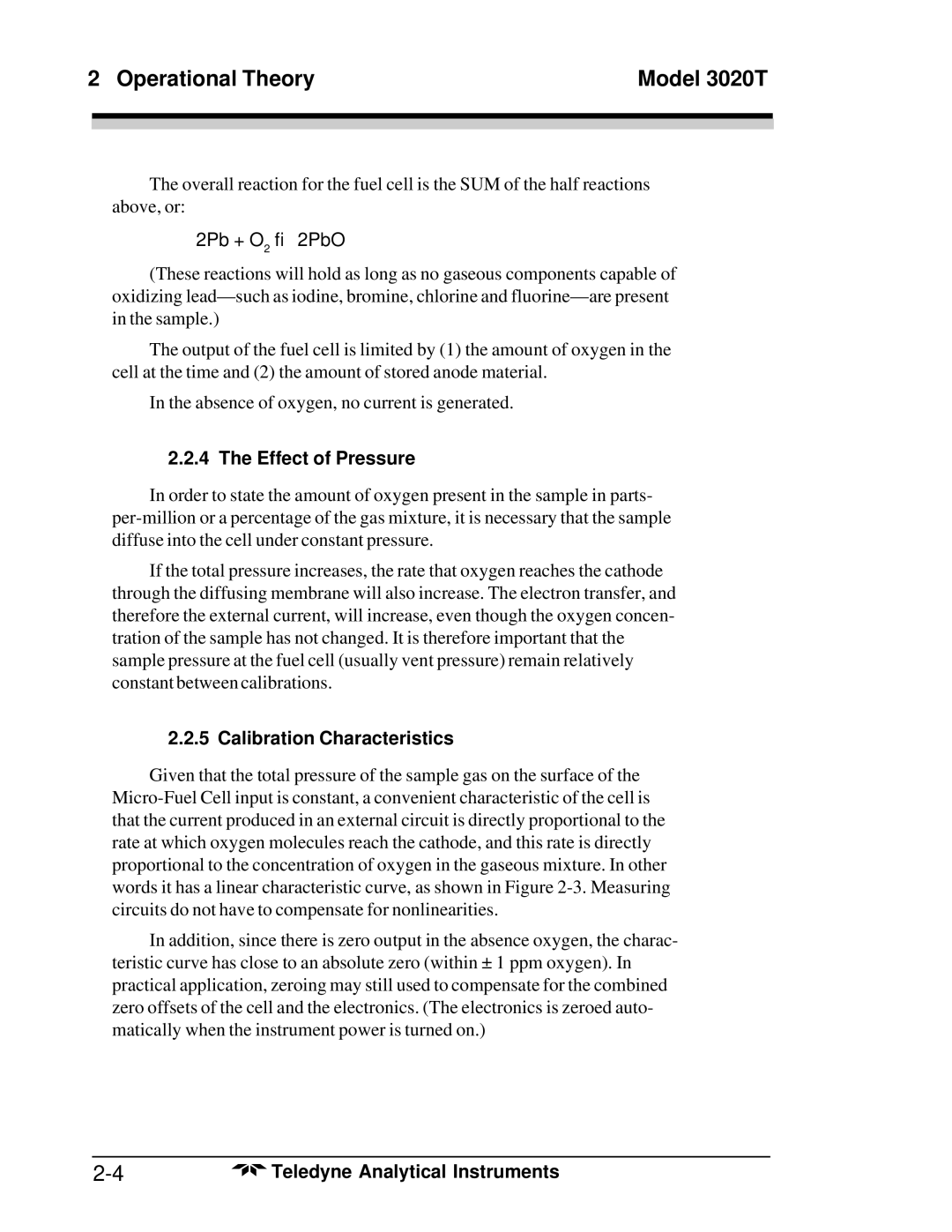2 Operational Theory | Model 3020T | |
|
|
|
|
|
|
|
|
|
The overall reaction for the fuel cell is the SUM of the half reactions above, or:
2Pb + O2 → 2PbO
(These reactions will hold as long as no gaseous components capable of oxidizing
in the sample.)
The output of the fuel cell is limited by (1) the amount of oxygen in the cell at the time and (2) the amount of stored anode material.
In the absence of oxygen, no current is generated.
2.2.4 The Effect of Pressure
In order to state the amount of oxygen present in the sample in parts-
If the total pressure increases, the rate that oxygen reaches the cathode through the diffusing membrane will also increase. The electron transfer, and therefore the external current, will increase, even though the oxygen concen- tration of the sample has not changed. It is therefore important that the sample pressure at the fuel cell (usually vent pressure) remain relatively constant between calibrations.
2.2.5 Calibration Characteristics
Given that the total pressure of the sample gas on the surface of the
In addition, since there is zero output in the absence oxygen, the charac- teristic curve has close to an absolute zero (within ± 1 ppm oxygen). In practical application, zeroing may still used to compensate for the combined zero offsets of the cell and the electronics. (The electronics is zeroed auto- matically when the instrument power is turned on.)
Teledyne Analytical Instruments |
